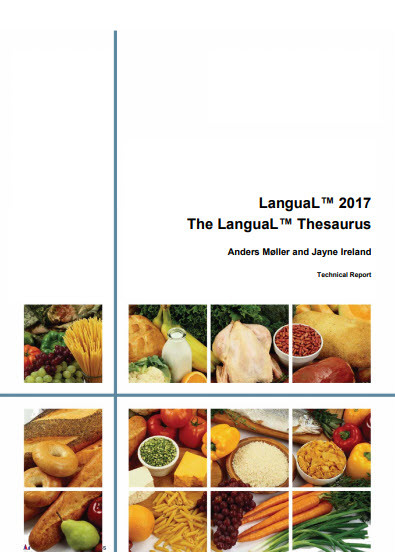LanguaL™ - the International Framework for Food Description |
|
| | Updated 2024-06-23 |
FoodOn - a field to fork ontology - the successor of LanguaL™
FoodOn provides the
comprehensive ontology, a controlled vocabulary, built to interoperate with the international OBO
Library collaboration and to represent entities which bear a “food role”.
FoodOn is based largely on LanguaL™ and is being further developed
in the ontology environment. For further information, see the
FoodOn website.
LanguaL™ is a Food Description Thesaurus
LanguaL™ stands for "Langua aLimentaria" or "language of food".
It is an automated method for describing, capturing and retrieving data
about food. The work on LanguaL™ was started in the late 1970's by the
Center for Food Safety and Applied Nutrition (CFSAN) of the United
States Food and Drug Administration as an ongoing co-operative effort of
specialists in food technology, information science and nutrition.
Since then, LanguaL™ has been developed in collaboration with the US
National Cancer Institute (NCI), and, more recently, its European
partners, notably in France, Denmark, Switzerland and Hungary. Since
1996, the European LanguaL™ Technical Committee has administered the
thesaurus.
The thesaurus provides a standardised language for describing foods,
specifically for classifying food products for information retrieval.
LanguaL™ is based on the concept that:
- Any food (or food product) can be
systematically described by a combination of characteristics
- These characteristics can be categorised
into viewpoints and coded for computer processing
- The resulting viewpoint/characteristic codes
can be used to retrieve data about the food from external databases
LanguaL™ is a multilingual thesaural system using facetted
classification. Each food is described by a set of standard, controlled
terms chosen from facets characteristic of the nutritional and/or
hygienic quality of a food, as for example the biological origin, the
methods of cooking and conservation, and technological treatments.
One problem concerning multilingual thesauri is the multiplicity of
natural languages: corresponding terms of different languages are not
always semantically equivalent. It was chosen to render LanguaL™
language-independent, to be used in the USA and Europe for numeric data
banks on food composition (nutrients and contaminants), food consumption
and legislation. Each descriptor is identified by a unique code pointing
to equivalent terms in different languages (e.g. Czech, Danish, English,
French, German, Italian, Portuguese, Spanish and Hungarian). LanguaL™ thus facilitates links to many different food data banks and
contributes to coherent data exchange. LanguaL™ is in common use for describing, capturing and retrieving
data about food, adapted to computerised national and international food
composition and consumption databanks.
More than 40000 foods in food composition databases LanguaL™ indexed
More than 27000 foods in European food
composition databases are now LanguaL™ indexed to facilitate search and
retrieval in the context of the
EuroFIR eSearch Prototype facility,
and currently the
EuroFIR FoodExplorer.
In addition, foods from USA, Canada, New Zealand and Australia have
been indexed. The USDA National Nutrient Database for Standard
Reference (SR28) is fully LanguaL™ indexed.
In total, more than 40000 European, North American foods and foods from other countries are now LanguaL™ indexed
and available on the download pages of the Langual™ site.
LanguaL™ 2017 - the current version of LanguaL™
 |
|
The current version of LanguaL™, version 2017, was published 15 April 2017. LanguaL™
was updated
extensively - especially in facet A Product Type and facet B Food
Source.
In facet A, the GS1 Global Product Classification has been updated
according to the GS1 GPC Standard for Food/Beverage/Tobacco (June
2017), except for codes pertaining to tobacco. Similarly, the EFSA
Food Classification and Description System for Exposure Assessment
(EFSA FOODEX2) has been included in LanguaL™ 2017 according to EFSA
FoodEx2 version Matrix 9.0 dated 2018-01-26 (downloaded 2018-02-07
from the EFSA Github repository) and comprises the FoodEx2 Exposure
Hierarchy.
LanguaL™ facet B has been updated thoroughly with new descriptors,
and existing descriptors have been updated with new information.
LanguaL™ 2017 contains a total of 12605 descriptors. |